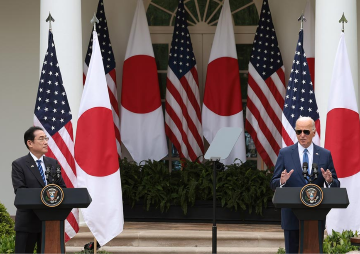
The COVID-19 pandemic wreaked havoc with India being shaken up by the misery and hardships of the migrant crisis. The pandemic has pushed several into the gulf of poverty, hunger and homelessness. One of the economic questions that needs to be asked at this point is about the household savings rate. Are households saving enough to insulate them from shocks such as the COVID -19 pandemic? Do they have enough resources to save? If not, are there any innovative ways of working around lower incomes to enable savings? We attempt to answer this last question in the ensuing discussion.
India’s story of its savings rate has not been very encouraging since 2011-12. The gross savings rate in India has been declining since 2011-12 driven primarily by a dip in household sector savings. Households constitute 60 percent of national savings. Furthermore, although household savings in financial assets have declined less than the same in physical assets, the worry is about the stagnation of the former at nearly seven percent of GDP. This worry stems from the need to secure funds for revival of investments and economic activity in the face of the slowdown that existed even prior to the pandemic shock. In fact, the savings rate plunged to a 15-year low in 2018-2019 to 30.1 percent from 34.6 per cent in 2011-2012, and 36 percent in 2007-08. A crunch in domestic investible resources would imply the need to look outwards and depend on external debt weakening India’s external position.
This worry stems from the need to secure funds for revival of investments and economic activity in the face of the slowdown that existed even prior to the pandemic shock.
Given this backdrop, it becomes pertinent to identify mechanisms which can encourage and motivate individuals in the informal sector, the low-income groups and other vulnerable sections of the society to save more. This following discussion outlines ways in which the above stated objective is achieved by insights from behavioural economics.
According to classical and neo-classical economic models, Homo-Economicus or “Economic Man” represents the notion that all humans are rational beings, whose choices are governed by the desire to optimise their gains. Behavioural economics, an amalgamation of economics with cognitive sciences, rejected the notion of Homo-Economicus and emphasised on the idea of bounded rationality. It recognised that human behaviour is largely influenced by social norms motivations such as fairness, altruism, cooperation, reciprocity etc., and is mottled by irrational economic decisions that cannot be subjected to a static environment.
Schemes such as Swachh Bharat Mission (SBM), Jan Dhan Yojana (JDY) and Beti Bachao, Beti Padhao (BBBP) harvest cognitive biases to change socially embedded norms.
Behavioural economics has given rise to the idea of choice architecture. This method influences how people are nudged to make choices that will be beneficial to them, without curbing their freedom of choice. Stemming from the notion of choice architecture, Nudge Theory was popularised by Richard Thaler and Cass Sunstein and has been used by governments to design behaviourally informed policy decisions.
In India, the Economic Survey (2018-19) lays emphasis on using the principles of behavioural economics to improve policy outcomes. Several policies employ behavioural economics to influence people’s choices by leveraging social norms. Schemes such as Swachh Bharat Mission (SBM), Jan Dhan Yojana (JDY) and Beti Bachao, Beti Padhao (BBBP) harvest cognitive biases to change socially embedded norms. Such nudges can have a comparative advantage over traditional cost-benefit analysis because they recognise the depth of people’s cognitive functions, intuitions, and emotions. How can such nudges solve the problem of low savings rate in the country?
The principal mechanism applied along with offering this saving technology was that of mental accounting in which the mind consciously acknowledges that the money is being kept aside for a specific purpose and hence is non-fungible with other sources of cash.
We can borrow lessons from global experiences in this context. We present a brief survey of the experimental interventions undertaken across the globe which seek to examine the impact of various forms of nudging on the level of individual savings. In a field experiment conducted in Kenya to understand how different kinds of saving technologies nudge people to save, it was found that a technology as simple as a secure space to park the money with no conditions around deposits or withdrawals, like in the case of banks was enough to nudge an appreciable amount of people to save and increase their level of savings.
The principal mechanism applied along with offering this saving technology was that of mental accounting in which the mind consciously acknowledges that the money is being kept aside for a specific purpose and hence is non-fungible with other sources of cash. It was also found that social pressure generated by group savings was very effective in influencing savings behaviour. That social pressure accompanying the principle of mental accounting was reinforced by another experiment conducted in Columbia. Credit schemes attached to saving technologies were also quite successful.
Utilising cognitive biases to nudge individuals raises certain ethical issues. Even with noble intentions, leveraging unconscious biases can create an asymmetric information market where the influencer has a comparative knowledge advantage against the targeted group.
The power of the principle of mental accounting as a mechanism to nudge was further corroborated in a field experiment conducted in Malawi in the context of farmers. Those farmers who were given the opportunity to deposit their cash crop savings directly into the bank ended with higher savings than those who were paid in cash for their harvest. Moreover, savings were highest amongst those farmers who set aside a portion of their savings in an additional fixed deposit.
In another field experiment conducted in Columbia in collaboration with leading commercial banks, low income youth with low levels of financial inclusion and financial literacy were targeted with nudging techniques involving technology. In this experiment, youth account holders were sent monthly and semi-monthly savings reminders in the form of cell phone text messages. These reminders had a significant impact on the level of savings of the youth account holders.
What is the intensity of a nudge and whether a nudge can lead to a shove if left unregulated?
Utilising cognitive biases to nudge individuals raises certain ethical issues. Even with noble intentions, leveraging unconscious biases can create an asymmetric information market where the influencer has a comparative knowledge advantage against the targeted group. It also raises ambiguity — which parameters are used to decide what is best for the target group? What is the intensity of a nudge and whether a nudge can lead to a shove if left unregulated? Application of the nudge theory must circumvent these limitations to become an optimal choice for policy making.
Savings is an important feature of the economy, affecting both — the individual and economy’s macroeconomic factors. With enough access to savings, individuals get more opportunities to acquire formal credit, accumulate capital as well as to invest in education and health, especially in unforeseen conditions like the ongoing pandemic. India has already laid the foundation necessary for ushering in financial inclusion through JAM (Jan-Dhan-Aadhar-mobile phone) trinity. This digital architecture needs to be leveraged to further optimise household savings using behavioural economics. India should seek inspiration from the ongoing application of the nudge theory especially in developing nations to undertake their own experimental studies to investigate and understand how best the principles of behavioural economics can be applied to increase savings in a way that is sensitive to the target group.
The views expressed above belong to the author(s). ORF research and analyses now available on Telegram! Click here to access our curated content — blogs, longforms and interviews.




 PREV
PREV



